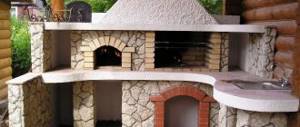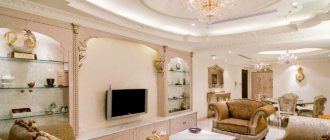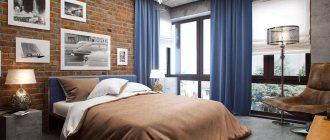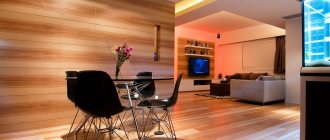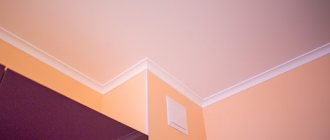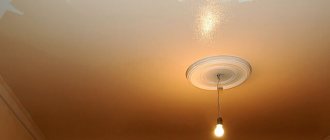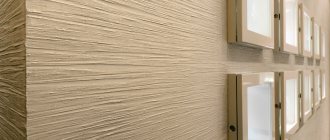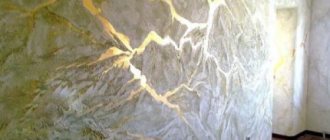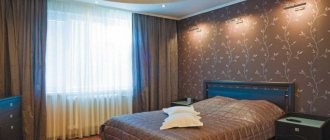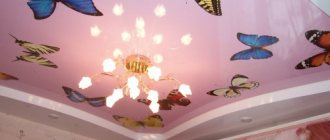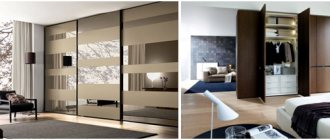Home — Articles — The use of clinker bricks and brick-like clinker tiles in the interior
Does brick look rough in the interior? Don't forget that there is a decorative variety. It is worth covering a section of the wall with decorative brick, and all attention will be focused exclusively on it. Feel free to introduce this feature in the hallway, living room, and kitchen.
The use of brick in a home interior is a good method for zoning rooms and placing accents on individual areas. At the same time, designers do not advise overusing brick. It should emphasize, attract attention, but at the same time not be annoyingly dazzling in every corner.
Popular areas for decoration with decorative bricks:
- a place behind the sofa or TV in the living room;
- apron for the kitchen, area near the dining table;
- space next to the fireplace;
- bar constructions, columns.
To decorate a house with brickwork, it is not necessary to use natural brick (although this option is also allowed); you can use ceramic tiles that imitate it, or facing bricks.
Brick Styles
Brickwork is not suitable for all directions. It has become a kind of calling card of the loft. The “combed” industrial style due to this decor emphasizes the laconicism of the interior and the close “kinship” of the room with the workshop. The tiles usually have a rough surface and imitate rough brown brick. In minimalism, such cladding will decorate a practical environment without frills. For this direction, materials of calm tones (gray, white) with a smooth surface are chosen. High-tech also uses neutral shades. A stylish solution would be brick tiles with a glossy surface that imitates metal. With country and Provence, the option is combined “creatively”. In the style of the French countryside, bricks are used only in delicate tones, while country style accepts a rough texture, as in a loft. In the Gothic direction, tiles with the effect of Venetian plaster are used, that is, with a surface that resembles marble with chaotic patterns.
Loft
The brutal texture of brick has literally become the hallmark of the modern Loft style. In such an interior, it will look at home in any room - in the living room, bedroom, kitchen and hallway. As a rule, in a loft, one wall is decorated with brickwork - the accent wall. The color of the masonry can correspond to the taste preferences of the owners - light, white, light gray masonry will contribute to the visual expansion of the space, while rich colors - brick, brown and even black are permissible only in spacious apartments.
Loft goes well with modern furniture and bright colors. Its main companions are metal, wood and glass. To create a stylish interior, you can paint the remaining 3 walls white. As a representative of the minimalist movement, the loft does not accept small, cluttered decor. Windows in this style do not need to be curtained, and blinds will look good on the first floors. Wooden floors will add coziness to the room.
In the kitchen, a kitchen apron made using the brickwork technique will add a zest to the loft style. However, you can also make a working wall with bricks up to the ceiling.
Brick-like gypsum tiles
Gypsum has its own characteristics, both positive and negative. This is the fastest way to reproduce tiles at home.
The peculiarity is that when creating it with your own hands, a textured design (using a stencil) and a color scheme are thought out in advance.
In order for gypsum tiles to retain their appearance, color and textured pattern, it should be treated with a special protective agent and varnished.
The texture of a brick is:
- Matte - does not shine, hides the small image on the front side. Doesn't glare when exposed to light. Therefore, a certain backlight is created on such a wall from spotlights, or an LED strip is fixed on it. And now it is becoming fashionable to introduce light lines into walls and ceilings, created using special profiles and plexiglass.
- Glossy varnish highlights the smallest pattern of the front side. Since it gives shine, no light is directed onto the finish as there will be strong glare. It will be annoying.
- Torn brick is a rough surface with a fine textured pattern. Such a tile with chaotically located stripes and angular protrusions. It was as if it had been carved out of a rock in the mountains and not modified. This brick is coated with various varnishes and sometimes paint.
- Relief facing material – has a relief convex pattern. An arch or a portal for a TV on the wall looks unusual with this finish.
All types of decorative tiles can, if desired, be produced at home. At the same time, it is also easy to make a mold for tiles yourself, if you want to create individualism, although it is easier to buy a ready-made one at a hardware store.
Areas of application for brick tiles
With the use of such tiles, anyone can create real interior masterpieces. Most often it is used to create an original apron over a kitchen surface, a decorative fireplace, or a shelf. The edging of a doorway or niche in the wall or windows looks very unusual and beautiful. You can successfully zone a room with the help of such a product - just decorate one surface with the material. A corner in a room with a brick finish looks very unusual. If you combine this material with wallpaper, painted walls or plaster, you can achieve an unusual design.
Wall tiles can be textured, that is, have uneven edges and be as similar as possible to brick or stone.
Advice! Think before you decorate an entire room. All 4 brick walls create the effect of a basement or garage, but not a bedroom, living room, or kitchen.
This design can emphasize the style of your room and create its unique image.
Decorative brick in the interior: choosing a style
Imitation of brickwork for interior decoration is widely used when decorating living rooms, bedrooms, kitchens, corridors and hallways.
Wall in the bedroom, decorated with decorative bricks
Decorative brick is used to decorate television panels, fireplaces (including electric ones, this makes them more realistic), around mirrors and doors, and finishing external and internal corners.
A section of wall finished with decorative bricks
At the same time, it is rare that all the walls are finished “in brick” - this is what they do when they want to recreate the atmosphere of a medieval castle, for example, in the fireplace. It should be remembered that stone (brick) walls can emotionally suppress the people present. More often they are limited to finishing one, less often – two walls (an option when a corner fireplace is installed).
Finishing the kitchen working area with decorative bricks
Living room wall decorated with rough brickwork
Decorative brick can be used to zone space, for example, in the kitchen of a house; it can be used to designate a work area. In addition, for kitchen design, it is often used to decorate the bar counter.
Decorative brick finishing of the work area of a modern kitchen
Brick goes well with metal and natural wood
Decorative brick painted white visually expands the space and does not “absorb” light
Using decorative bricks to decorate the wall at the top of the stairs
Interior brick finishing (photos of original ideas are shown below) can be used in different styles:
loft - rough, literally - brutal brickwork is one of the indispensable attributes of the style. Usually, when decorating a living room in the loft style, one wall is completely finished with decorative bricks, and in order for the masonry to look as realistic as possible, it should not be perfect - the brick should, as it were, bear the stamp of time
Decorative brick in a loft interior
Decorative bricks will create the much-needed industrial atmosphere for a loft.
Decorative brick looks harmonious with other country style elements
Decorating the wall around the fireplace in a bedroom with a country-style interior
high-tech - in the decor of the room they use exclusively perfectly smooth, with a glossy surface, gray or shades of white decorative brick. You can decorate one wall; columns trimmed with shiny glossy brick will also look very impressive. In this case, the grout is selected to match the brick used as much as possible, so that the seams are practically indistinguishable
Smooth and monotonous decorative brick in a high-tech interior
The use of rough and aged decorative bricks in a high-tech interior
English style - when decorating a kitchen, it is possible to completely cover all the walls. But only if it is a spacious, large and fairly bright kitchen, and other natural materials are also used in the decoration - ceramics, stone, wood. In small kitchens, decorative brick-like tiles are used, which are most often used to decorate the backsplash. This area is exposed to increased moisture, so gypsum brick is not allowed, and a smooth surface is easier and more convenient to clean.
Decorative brick in the English style kitchen
Exterior decoration of buildings imitating brickwork
Almost all manufacturers of interior panels produce panels for exterior decoration. For cladding the plinth, more resistant panels made of wood concrete, fiberglass, thickened vinyl and acrylic, clinker tiles, metal, and composite are used. Brick panels for finishing the outside of the house will decorate the facade, enrich the plasticity and color, and create the effect of an ancient building.
Manufacturers and cost
Brick-like facade panel made of fiber cement made in Japan, NICHIHA (Nitiha), 14 mm thick, weighing 1 pc. 22 kg, with self-cleaning function costs 2535 rubles.
Alsama Sendstone White brick-look facade panel costs RUB 455.
The price difference depends significantly on the manufacturer and panel material. Among all imitations of brick for external cladding, PVC panels have the most attractive price.
How to make gypsum tiles with your own hands: manufacturing technology
As you can guess from the name, one of the main components of such tiles is gypsum. It is recommended to use material marked as GF 10, since its characteristics fully meet all requirements. This brand of gypsum is quite durable, has a long service life and can withstand loads well.
If for some reason it was not possible to purchase this particular material, you can additionally compact any other material by adding special strengtheners to it, designed to improve the properties of the material. But even in this case, it is worth considering that such brick-like facing tiles are not used for exterior decoration.
So, let’s try to figure out how to make plaster at home that is suitable for covering surfaces and at the same time quite resistant to external influences. The following materials can be used for this purpose:
- gypsum;
- plasticine;
- paraffin (you can use regular candles);
- cardboard box;
- silicone sealant.
For the manufacture of gypsum tiles, gypsum brand Gf 10 is best suited
Of course, the easiest way is to use a ready-made silicone mold for tiles, which will significantly simplify the manufacturing procedure and reduce the time spent on it. But in general, you can make a mold for gypsum tiles yourself, using sculptural plasticine.
In order to make a mold, sculptural plasticine is rolled out in an even layer, the thickness of which should be about 20 mm. Then, using the most ordinary brick, impressions are made inside, which will serve as molds for casting.
You can also use paraffin to create a mold for a decorative stone with your own hands. It must be melted and poured into a box of the appropriate size that the brick can fit into. After the paraffin has completely hardened, it can be removed and used as a mold. The same method is also suitable when working with silicone sealant.
Making gypsum tiles is quite simple if you follow the rules for working with the material.
How long it will take to make gypsum stone tiles directly depends on how many molds will be prepared. It's better if there are quite a lot of them. Then fewer approaches will be required to cast the required number of elements.
The process of making gypsum bricks for interior decoration is as follows:
- gypsum must be poured into a container and water added to obtain a solution with a creamy consistency;
- the molds into which the gypsum solution will be poured for hardening must be pre-lubricated with fat or oil so that the elements can be easily removed in the future;
- After pouring the mixture into the mold, shake it gently so that the solution is distributed evenly.
One of the main advantages of gypsum tiles is its environmental friendliness.
Gypsum tiles are an excellent facing material that can significantly transform the interior of a room. With its help, you can decorate niches, ledges, flights of stairs in an original way, as well as zone the space. The main thing is to choose the right location to avoid contact with moisture and increased mechanical stress. In this case, decorative brick-like tiles will decorate your interior for many years.
Development of production of decorative gypsum tiles for brick
Gypsum stones have good performance characteristics and are intensively used for interior decoration. This is explained by the following advantages of this material:
- Environmental safety and harmlessness;
- Additional humidifier in the room;
- Highest practicality of the material;
- Excellent performance properties;
- Possibility of coloring;
- Affordable price.
There are many methods for producing gypsum decorative stone. Some craftsmen add additional ingredients to the composition in the form of lime, lemon juice, and glue. But, traditional recipes for making gypsum tiles involve the use of gypsum and water.
Using gypsum tiles you can decorate a room in various styles. It suits almost all modern trends. Plaster tiles add elegance and sophistication to the room. In addition, with its help it is possible to hide small imperfections in the walls, such as uneven corners or ceilings.
Some designers use gypsum tiles to decorate arched skylights, plasterboard partitions, fireplaces, and stairs. The tile has a pleasant texture that decorates the room, making it more attractive.
But gypsum tiles also have a certain drawback. It consists first of all in the low strength of this material. Comparing cement and gypsum tiles, the second option is the least strong. To improve this indicator, special substances are added to the solution for making tiles; they often have a polymer base.
We invite you to familiarize yourself with the advantages of using gypsum stone when constructing house tiles:
- The presence of ergonomic forms activates the process;
- The technological process does not require a vibrating table;
- The material is easy to paint;
- Compositions for the production of tiles are affordable.
Constructing gypsum stone at home will be painfully simple if you approach this process with the utmost seriousness and seriousness.
To produce brick-like tiles from gypsum, you will need special shapes. It is optimal if they are made of silicone. Because the material, upon completion of hardening, is simply removed from the mold without damage. Purchasing silicone molds will be expensive, but they can be used many times, not only for the production of tiles.
Polyurethane molds are more expensive and are suitable not only for the production of gypsum tiles, but also for cement tiles, as they are able to withstand alkali. The service life of such forms is much longer than silicone ones.
In addition, during the production of tiles, you will need to have a special container in which to mix the gypsum mortar. We advise you to give preference to plastic products, as they are easy to wash.
The combination of gypsum and water without additional impurities will allow you to make tiles with a high level of fragility. This material is not suitable for finishing the room. Based on this, additional lime must be added before adding water to the gypsum.
To mix the solution, use a drill and a mixing attachment. Pour the purchased solution into the mold and wait for it to dry. Please note that the form must be placed in a room free of drafts and cold.
Prolonged mixing of gypsum is unacceptable. Because the material quickly sets and does not harden in the future. If you find bubbles on the surface of the solution, then place the form with it on a vibration table for one hour.
To produce colored decorative brick tiles, dye is added to it during the mixing of the mortar. Special coloring compositions are distinguished by high prices and low service life. Another substitution is dyes, thanks to which it is possible to tint the paint.
According to the advice of some professionals, adding cement to the gypsum composition will increase its strength. But, such tiles lose their antiseptic characteristics and quickly become covered with fungus and mold.
When making decorative brick tiles from gypsum, you need to consider the following tips for working with this material:
- In the absence of additional plasticizers that provide the strength of the finished material, they are replaced with citric acid in a certain proportion.
- The hardening time of the gypsum is fifteen minutes, and then it is removed from the mold. The finished tiles are dried on a flat surface for another couple of hours.
- Please note that gypsum mortar is only suitable for one pour of molds, as it quickly deteriorates.
Purpose and colors of the material
The material is presented in a large assortment in stores. Once you familiarize yourself with the varieties, it will be easier to make a choice.
There are several types of tiles:
- technical is an unpainted material suitable for cladding industrial and laboratory premises. The thickness in this case is usually higher, since resistance to chemically aggressive substances and mechanical strength are important for such objects;
- regular - a simple product, equally suitable for decorating a living room or kitchen. It has higher porosity and a variety of textures;
- waterproof with a good water-repellent layer. It is designed not so much for baths, but for more humid rooms - saunas, swimming pools, where the humidity is higher and the temperature drops much more;
- thermal insulation - clinker made in an unusual way. To achieve maximum density, the product is dried before firing. If this is not done, the tiles are more porous and have poor thermal insulation properties. This option is suitable for cases where external thermal insulation of the building is impossible or insufficient.
Special products are produced to produce complex architectural forms. Typically, this need arises when decorating public spaces.
The main attention when choosing is paid to the appearance of the product. The addition of mineral pigments allows you to obtain any, even exotic shades
In this case, the color does not change over time, since the coloring component is mixed with the original material.
Materials
Decorative clinker bricks can be of any color. The material is characterized as durable and practical, durable in use. This option can be used both for finishing the interior of a room and for finishing the façade of a building.
Everyone knows that gypsum is a crumbly and fragile material, although it is very light and excellent for use during interior finishing work. The natural color of gypsum is white, it can be changed at the stage of diluting the solution or during installation.
Polyurethane as a material for the manufacture of decorative bricks is widely used for interior decoration.
Polyurethane is widely used for interior finishing
One of the materials for finishing a brick-like wall is polystyrene foam, which is available for purchase, easy to use and often used in practice.
The most convenient and popular type of interior decoration is considered to be gypsum brick. Its cost is cheaper than other analogues, while it is stronger than polymer materials, and its visual combination with other interior items is more harmonious. If you want to create on your own, then making gypsum tiles will not be difficult: mix water with gypsum in the correct proportions, add PVA glue, prepare molds for pouring the solution and wait for it to dry. To make colored plaster, you just need to add a coloring pigment to the solution.
The most popular type of interior decoration is considered to be gypsum brick.
When laying decorative bricks, you should choose the right adhesive mixtures. Ordinary cement adhesive is used for tiles. Silicone sealants provide quick adhesion to almost any surface.
To decorate the facade of a building, the adhesive mixture must be resistant to frost and temperature changes, otherwise the solution will peel off along with the decorative coating
It is important to always monitor the storage conditions and shelf life of long-purchased adhesive mixtures so that their beneficial properties are suitable for use.
Laying gypsum bricks with your own hands
Laying gypsum bricks
If you listen to some recommendations from experienced finishers, the work will turn out to be quite simple:
- Before laying, do not forget about the preliminary preparation of the walls: applying plaster, putty, primer.
- The range of gypsum tiles on the market is quite diverse. All that remains is to calculate the required volume of material, select it and take it with a small margin.
- In order to lay gypsum bricks, you will need ordinary white tile adhesive. The consistency of the glue must be brought to a thick and viscous mass.
- You can trim tile elements with a hacksaw or a file.
- The wall is finished from the bottom up; the glue is applied not to the wall, but to the tiles. It is recommended to remove excess glue immediately.
- The material needs to be firmly fixed and dry. This may take about 24 hours.
- It is best to varnish the coating with stone mortar. The choice of color or shade of varnish depends only on you. There must be at least two layers of application of the solution.
- The seams must be processed, all defects removed and masked.
Installation
Finishing material is installed using several methods:
- onto the prepared wall using an adhesive composition;
- on the sheathing.
The first option is used on smooth walls that do not have defective areas, fixing the panels with glue or liquid nails. Installation is easy and no special skills are required.
In most cases, the frame base is used for exterior finishing of a building, combining work with the process of surface insulation. Lathing is used if the surface of the walls is strongly curved.
The work algorithm looks like this:
- the surface is pre-prepared. Uneven places and cracks are sealed with plaster mortar, and sagging is removed. After this, the entire wall is covered with a layer of putty;
- in case of significant defects, lathing is installed, for which aluminum or wooden slats are used, fixed to the wall at intervals of thirty-five to forty centimeters;
- installation work begins with attaching the starting rail and elements for finishing corner areas;
- ordinary guides rest on a reinforced bar. The adhesive composition is applied to the central part of the slab and along its entire perimeter, after which the slab is pressed against the wall with light force. If installation work is carried out on the sheathing, the material will have to be fixed with self-tapping screws, screwing them into the perforated strip located on the upper edge of each part;
- the next row is installed in a tongue-and-groove system, the part is securely attached to the slats or wall. Long elements are cut with a hacksaw and joined with other parts or opening areas;
- The installation activities are completed by installing the finishing strip.
Size range of clinker bricks
Products of this type are produced by a large number of enterprises both in our country and abroad. One way or another, all manufacturers adhere to certain standard sizes. The dimensions of a brick can be determined from its name.
- NF is a single stone, with dimensions 250*120*65 mm.
- There is 1.4 NF - this is a one-and-a-half stone, with parameters 250 * 120 * 88 mm.
- In addition to these samples, there is a double stone 250*120*140 mm (2.1 NF).
In addition to the listed sizes, manufacturers produce so-called European bricks, they are marked NF 0.7 and NF 1.3. It has the corresponding dimensions 250*85*65 and 288*138*65 mm.
Variety of models
Imitation brick panels are made from different materials - clinker tiles, wood concrete, chipboard, PVC, MDF, metal panels. Such panels have a wide variety of sizes:
- rack - 120...300 cm x 19...25 cm;
- rectangular - 120...140x60 or 90 cm;
- square with a side size of 30.60 or 90 cm.
The thickness varies from 2-3 mm for PVC to 12...20 mm for clinker or cement-bonded (arbolite panels).
PVC panels
PVC plastic panels have the largest range of sizes and number of designs; they are produced for both interior and exterior decoration.
Exterior panels are thick and resistant to ultraviolet radiation and various temperatures - both high and low. In the interior, such panels can easily replace tiling in wet rooms - bathrooms, toilets, laundry rooms. This is the most popular material for home decoration.
MDF panels
Brick-like MDF panels are produced with a laminated surface, pressed to create a relief for the seams. Wood-fiber MDF panels are impregnated with water-repellent compounds to protect them from moisture, however, it is better to use them for interior decoration, since they have a limited service life under weather conditions. In the interior, these panels give the full impression of high-quality brickwork and are easy to install.
Varieties
Brick finishing or laying under brick can be different. Let's take a closer look at the most common and top-end options for such cladding.
From plaster
Gypsum bricks are inexpensive and very popular. Decor made from such materials can have almost any texture, shape and size. In addition, many consumers turn to these products because they are not afraid of temperature changes - under their influence, gypsum stone does not lose its shape and is not subject to deformation. But we must take into account that gypsum cannot boast of particular water resistance. This type of finish will have to be coated with a special protective compound that will protect it from excessive moisture absorption. Typically, specialized varnishes and paints are used for this.
If we focus on the texture of gypsum brick, we can distinguish the following varieties:
- matte - these bricks do not have shine and shine, but are also treated with protective compounds;
- glossy - these are shiny products that are necessarily coated with a special varnish that provides the material with a glossy shine;
- torn - this finish does not have smooth planes, but there are chaotically scattered roughness and corners;
- relief - the surface of such decorative bricks is complemented by a variety of relief overlays;
- concave and convex - such bricks are distinguished by an interesting volumetric effect, which is achieved thanks to their non-standard shape.
Made of ceramics
The first decorative bricks were made from this raw material. Ceramic bricks are among the most aesthetically pleasing and in demand. With them you can radically change the interior, making it more cozy and hospitable.
Ceramic bricks are quite practical, durable and reliable. In many of their characteristics, they are similar to wear-resistant ceramic tiles, so popular among modern consumers. The main advantages of such products are:
- high strength;
- unsurpassed reliability;
- long service life;
- incomparable practicality;
- destructive moisture does not penetrate into the ceramics, which can destroy this material over time (which is why ceramic tiles are an ideal solution for the bathroom);
- such a brick will not be subject to deformation, even if serious loads are placed on it;
- Ceramic brickwork is not afraid of changes in temperature conditions.
From porcelain stoneware
Such decorative bricks are rightfully recognized as the most reliable, durable and strong. Damaging them is not as easy as it might seem. Porcelain tiles are made using a special technology, which can only be adhered to in large-scale production conditions. It is simply not possible to produce high-quality porcelain stoneware finishing materials at home.
Decorative brick made of porcelain stoneware boasts the following positive qualities:
- it is frost-resistant;
- it is not afraid of temperature changes and moisture penetration;
- such a brick does not absorb pollution because it has a special top layer;
- in stores you can find a huge number of multi-colored decorative stones made of porcelain stoneware;
- Similar products are available in a wide variety of sizes.
Clinker
This wall decoration has a special charm. Clinker snow-white elements are very similar to real bricks. This material has a high density, so it can be safely used in finishing rooms where frequent temperature changes occur.
Natural brick
Decorating with natural bricks is convenient to use in recently constructed buildings, where, in fact, renovations have not yet been carried out. Take note: this option will allow you to save on finishing! And in old houses, the brickwork hidden under a layer of wallpaper can be cleaned, treated and made into a fashionable element of the decor. Newly constructed brick walls will also need treatment. They must be sanded, the seams rubbed, and the surface coated with water-based varnish.
Useful tips
What you need to consider when choosing a brick wall for the kitchen:
- Natural brick looks great in the dining area or on a non-working wall, but it is not suitable for a backsplash. For the cooking area, it is better to choose ceramic tiles with an appropriate design.
- If you want to completely decorate one of the walls with brick, you should choose the one that is best illuminated by the sun.
- You shouldn’t line all the walls of the kitchen with brickwork, otherwise the room will be no different from a basement. It is best to use this material as a link between zones or as decoration for openings.
- A brick kitchen should be illuminated as much as possible. For this, not only lamps and spots are used, additional lighting of furniture and tabletops will also not be superfluous. To allow more light into the room, you should not close the windows with curtains that are too thick.
- Cladding tiles can be used to decorate not only the surfaces of walls or floors, but also furniture. Brick is suitable for simulating a fireplace or creating a real home, if we are talking about a private home.
- A brick ceiling is an original solution, but is only suitable for private houses. In modern apartments, such decor not only looks too bulky, but can also be dangerous.
- If the walls of a house or apartment are made of brick, they do not need to be subjected to additional processing. But if you wish, you can paint some of the surfaces or highlight niches and protrusions with a different color.
The general design rule is that for a small kitchen it is better to use light colors, while dark ones are appropriate in spacious rooms with large windows.
All of the above are not the only ways to use brick in the kitchen interior. With proper imagination and taste, you can create a unique design.
Methods of decorating with plaster
The most common type of gypsum products for interior design is stucco. None of the connoisseurs and designers will argue with this fact. Columns, sculptures, brackets and rosettes, cornices and ceilings can look very beautiful. All this will undoubtedly create luxury and wealth.
A simpler finishing method is gypsum brick. Such decorative material can imitate the look of brick, stone, antiquity or wear. It all depends on the design of the gypsum tiles. But it is important to take into account that the modeling must be combined with high ceilings, free space and special wallpaper and furniture, but there are no such requirements for finishing with gypsum bricks. It can be installed in a small one-room apartment or in a large country house. You can make a corridor or hallway very attractive. A gypsum finish would be very appropriate here, as it looks excellent and has the necessary characteristics.
Clinker bricks for Loft style interiors
Brick cladding gives the facades an original and presentable look. In addition, some elements of the house made from this building material can diversify the interior and add their own touch of individuality. Due to the aesthetic properties of clinker brick and its universal technical characteristics, it has been a favorite and the most popular finishing material for a long time.
Facing brick intended for finishing work has a low water absorption coefficient, for this reason it is relatively resistant to destructive factors. Not afraid of ultraviolet radiation, temperature changes, increased moisture, or mechanical damage. This improved material has relatively high compressive strength and can withstand up to 20 cycles of thawing and freezing, which means that the brick is endowed with excellent frost resistance. It is not afraid of chemical aggression, abrasion and other mechanical loads.
Clinker bricks are based on special technological and production solutions that help achieve high quality results. Only high-tech raw materials are used in production, and instead of firing, the brick is sintered at a fairly high temperature, so this material is distinguished by exceptional hardness, unique water absorption parameters, environmental friendliness and excellent durability.
The market offers a wide range of clinker bricks, which differ in color spectrum and texture. It can perfectly imitate various natural materials: marble, tile, wood. The color range of the material directly depends on the raw materials used. Clinker bricks are ideally combined with glass, raw concrete, and steel.
The surface of a brick can be rough or smooth, have a traditional shape or with rounded corners, taking into account the varied colors and textures, this particular material opens up enormous possibilities, allowing you to create amazingly beautiful compositions in the interior. With the help of clinker, you can emphasize and highlight the most expressive structural elements: bay windows, arches, podiums, window openings or even entire walls.
Use as a fundamental material dictates its own style, which can be safely implemented. Most often, clinker is used on the principle of contrasting color and texture in relation to other finishing materials used as an accenting element. Clinker bricks in interior decoration are an integral part of the loft style that is popular today.
What it is?
Facing (decorative) brick is a unique building material that has appeared on the market recently, but has already become widely used. It is chosen for both interior decoration of apartments and country houses. Working with such bricks is simple, so it is often done independently, without the help of specialists. Due to the fact that this cladding product has high strength, durability and environmental friendliness, it is recommended to be used when decorating any premises, including children's rooms. Decorative panels are available in a variety of colors, ranging from delicate white to bright yellow and brown.
In its structure, decorative brick resembles a combination of tiles and artificial stone. Today, manufacturers produce this material using clay, cement and gypsum as the main components. Unlike artificial stone, facing brick is characterized by a relief surface. It has a rectangular shape; there are also models with slightly rounded corners.
The main advantages of the product include:
- ease of installation;
- durability and reliability in operation;
- high wear resistance;
- absence of components harmful to human health;
- excellent sound insulation;
- fire resistance;
- wide range of models.
As for the disadvantages, there are none, with the exception of the high cost. But manufacturers have recently begun to produce budget versions of the material, which are in no way inferior in quality and are available for purchase to families with an average financial income. In addition, a huge selection of material formats allows you to save on finishing work. Traditionally, the product has the dimensions of an ordinary brick, but its height can range from 6 to 15 cm, and its length is 16-24 cm, while the thickness of the tiles is constant and equal to 2.5 cm.
